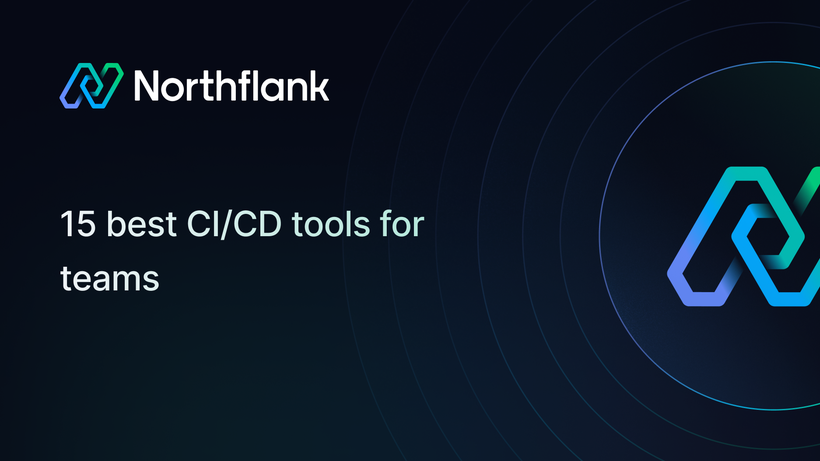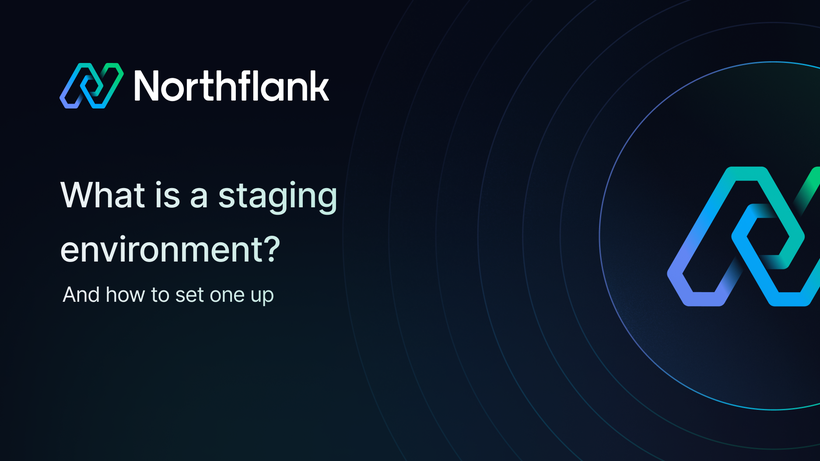

Travis CI vs Jenkins: which CI/CD tool should you choose in 2025?
Choosing between Travis CI and Jenkins means understanding what each platform does well, where they differ, and what happens after your builds pass.
Both tools automate your build and test workflows, but they take fundamentally different approaches to setup, hosting, and customization.
This comparison reviews Travis CI and Jenkins in detail, including their features, configurations, use cases, and trade-offs, so you can make an informed decision based on your team's needs.
Travis CI vs Jenkins comes down to cloud-hosted simplicity versus self-hosted control.
Travis CI is a cloud-based CI platform where you connect your repository, add a .travis.yml file, and start building. It offers straightforward configuration with language-specific defaults, a build matrix, and multi-environment testing.
Jenkins is a self-hosted, open-source automation server that gives you complete control over your build environment. It requires installation and maintenance but offers extensive customization through 1,800+ plugins. While the software is free, you're responsible for infrastructure costs and ongoing maintenance.
Note: The major question isn't only about which tool builds your code better; it's what you need beyond CI/CD.
Both platforms handle builds and tests, but shipping production software also requires deployment infrastructure, database management, environment orchestration, and observability.
Solution: Platforms like Northflank provide CI/CD as part of a complete deployment workflow, so you don't need to piece together multiple services while giving you the flexibility to deploy to your own cloud infrastructure.
Travis CI is a cloud-based continuous integration platform that automatically builds and tests code changes whenever you push commits or open pull requests. You define your build configuration in a .travis.yml file in your repository, and Travis CI executes those steps in clean, isolated environments.

Travis CI provides essential continuous integration capabilities with minimal configuration overhead:
- Multi-language support - Works with over 30 programming languages, including Python, JavaScript, Ruby, Java, Go, and PHP
- Build matrix - Test across multiple language versions, operating systems (Linux, macOS, Windows), and dependency combinations simultaneously
- Built-in caching - Speed up builds by reusing dependencies between runs
- Version control integration - Integration with GitHub, Bitbucket, and GitLab
- Automated deployments - Deploy directly to platforms like Heroku, AWS, and Google Cloud Platform
Pros:
- Straightforward YAML configuration with sensible defaults
- Isolated build environments for every run
- Lower learning curve
- GitHub integration
Cons:
- Limited customization compared to self-hosted solutions
- Can become expensive for larger teams or private repositories
- Less control over the build environment
- Dependent on Travis CI's infrastructure availability
Jenkins is an open-source automation server that you install and run on your own infrastructure. It automates building, testing, and deploying software projects through pipelines you define using the Groovy-based Jenkins Pipeline DSL or through its web interface.

Jenkins delivers automation capabilities through its extensible architecture:
- Extensive plugin ecosystem - Over 1,800 plugins that integrate with most tools in the CI/CD toolchain
- Pipeline as code - Create complex pipelines using Jenkinsfiles for version-controlled build definitions
- Distributed builds - Distribute builds across multiple machines for parallel execution
- Complete customization - Customize every aspect of your build environment to match your requirements
- Broad language support - Works with most programming languages and version control systems
- Build visualization - Detailed monitoring capabilities and pipeline visualization
Pros:
- Extensive customization through 1,800+ plugins
- Full control over infrastructure and security
- Large community with detailed documentation
- Scales to support thousands of jobs and users
Cons:
- Requires installation, configuration, and ongoing maintenance
- Steeper learning curve with more complex setup
- Can become resource-intensive for large projects
- UI feels dated compared to modern CI/CD platforms
Travis CI vs Jenkins represents the choice between cloud-hosted convenience and self-hosted flexibility. To give you a complete picture, we're also including Northflank in this comparison so you can see how an integrated platform approach differs from specialized CI/CD tools.
Below is a side-by-side comparison across the key factors to consider when selecting your build and deployment strategy:
| Travis CI | Jenkins | Northflank | |
|---|---|---|---|
| Setup | No installation (sign up, connect repository, add .travis.yml) | Requires installation on server, configuring agents, and security setup | No installation (connect Git repository and deploy from the platform) |
| Hosting | Cloud-hosted SaaS managed by Travis CI | Self-hosted on your infrastructure (on-premises, cloud VMs, containers) | Managed cloud or deploy to your own cloud (AWS, GCP, Azure, Civo, on-premises Oracle) via BYOC (Bring your own cloud) |
| Configuration | YAML file (.travis.yml) with language defaults | Jenkinsfile using Groovy DSL or web-based configuration | UI-based, CLI, API or Infrastructure as Code with templates; no YAML for basic workflows |
| Customization | Limited to .travis.yml options | Extensive through 1,800+ plugins and custom scripts | Configurable through UI, CLI, API, or templates |
| Learning curve | Low (straightforward setup with good defaults) | Steep (extensive features require time to master) | Low (intuitive UI with straightforward setup; advanced features available when needed) |
| Maintenance | Fully managed (no maintenance burden) | Your team maintains updates, plugins, patches, and infrastructure | Fully managed on Northflank cloud; Bring Your Own Cloud (BYOC) option available (you control infrastructure, Northflank manages orchestration) |
| Scalability | Auto-scales based on plan's concurrent build limits | Manual scaling by adding build agents | Auto-scaling built-in based on traffic and demand |
| Deployment | Built-in providers for Heroku, AWS, GitHub Pages, etc. | Flexible deployment via plugins or custom scripts | Native infrastructure (services, databases, jobs run on platform; BYOC support) |
| Beyond CI/CD | Focuses solely on continuous integration and delivery | Focuses on CI/CD automation; separate tools needed for hosting | Complete platform: CI/CD, hosting, databases, preview environments, observability |
Travis CI and Jenkins both handle building and testing code well. But after your tests pass, you still need infrastructure to run applications, databases for staging and production, environment orchestration, preview environments for pull requests, and observability for monitoring.
Most teams manage multiple platforms: Travis CI or Jenkins for builds, Heroku or AWS for hosting, a separate database provider, and monitoring tools. Each service brings its own configuration, billing, and integration overhead.
Northflank provides CI/CD as part of a complete platform. When you push code to your GitHub, GitLab, or Bitbucket repository, Northflank builds and deploys automatically. You get managed databases (PostgreSQL, MySQL, MongoDB, Redis), automatic full-stack preview environments for every pull request, and built-in observability with logs and metrics. With Bring Your Own Cloud, deploy to your AWS, GCP, Azure, Civo, Oracle, or bare-metal infrastructure while Northflank manages orchestration.
 Northflank fits well if you're:
Northflank fits well if you're:
- Consolidating separate CI/CD and hosting tools
- Building containerized applications or microservices
- Running AI/ML workloads needing GPU support (H100, B200, A100, e.t.c.)
- Avoiding vendor lock-in with BYOC (Bring your own cloud)
- Scaling without rebuilding your deployment workflow
If you only need builds and tests, Travis CI or Jenkins works. But if you're looking at your complete deployment workflow (from code push to production), Northflank provides an integrated platform that reduces toolchain complexity.
Here's how to decide between Travis CI, Jenkins, and Northflank based on what you actually need:
| Choose this | If you need |
|---|---|
| Northflank | Complete deployment platform where CI/CD is integrated with infrastructure, databases, and orchestration. Instead of combining separate tools for builds, hosting, and databases, you get the full application lifecycle in one place with the flexibility to deploy to your own cloud. |
| Travis CI | Cloud-hosted CI with minimal setup and no infrastructure management. The build matrix makes multi-environment testing straightforward, and you want to avoid maintaining servers. |
| Jenkins | Maximum control and customization over your CI/CD pipelines. You have the technical resources to manage infrastructure, need extensive plugin integration, or have security/compliance requirements that mandate self-hosted solutions. |
The decision extends beyond which tool builds your code; it's about how you want to manage your entire deployment workflow. If you're evaluating CI/CD platforms, think about if you want specialized build tools that you'll integrate with other services, or a complete platform that handles everything from code push to production.
See how Northflank manages your application lifecycle with our quickstart guide, try the platform with our free developer sandbox, or book a demo to speak with an expert engineer about your specific deployment needs.


